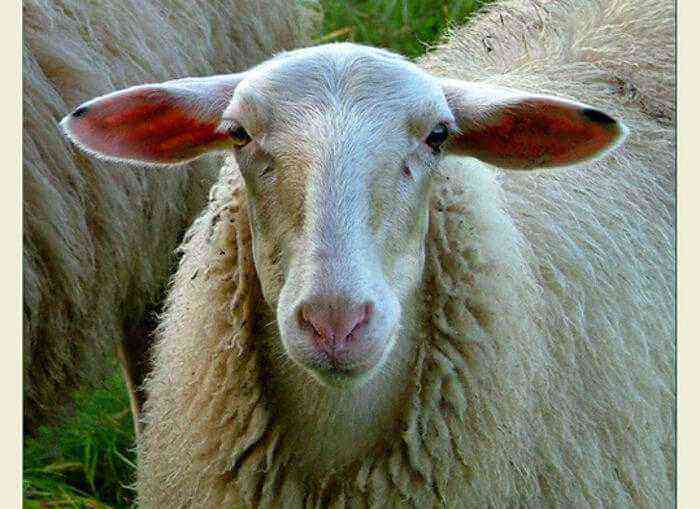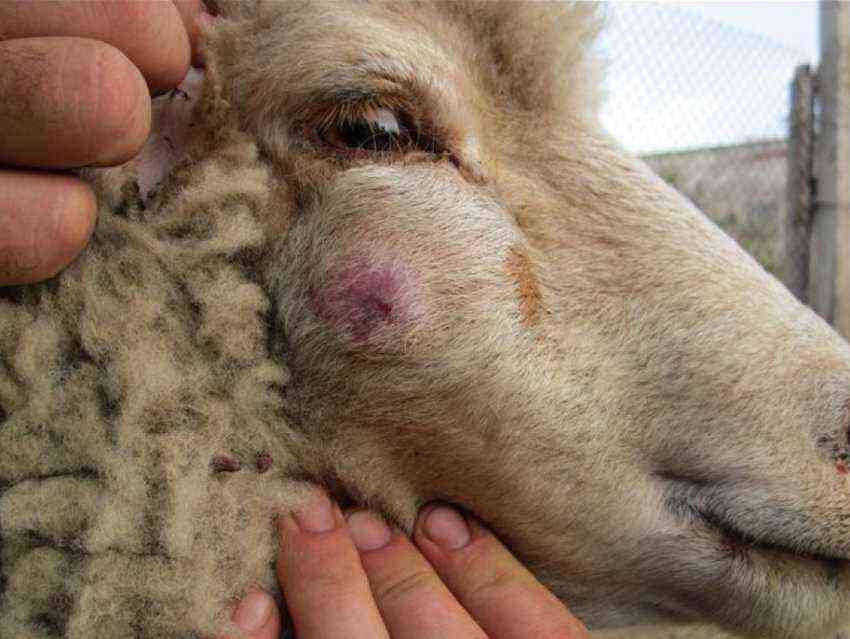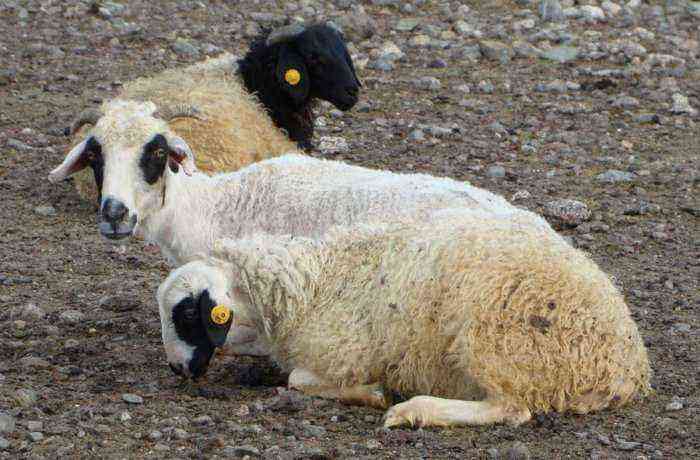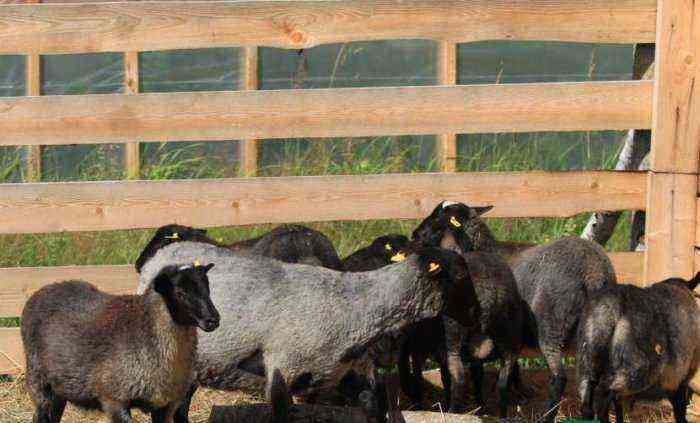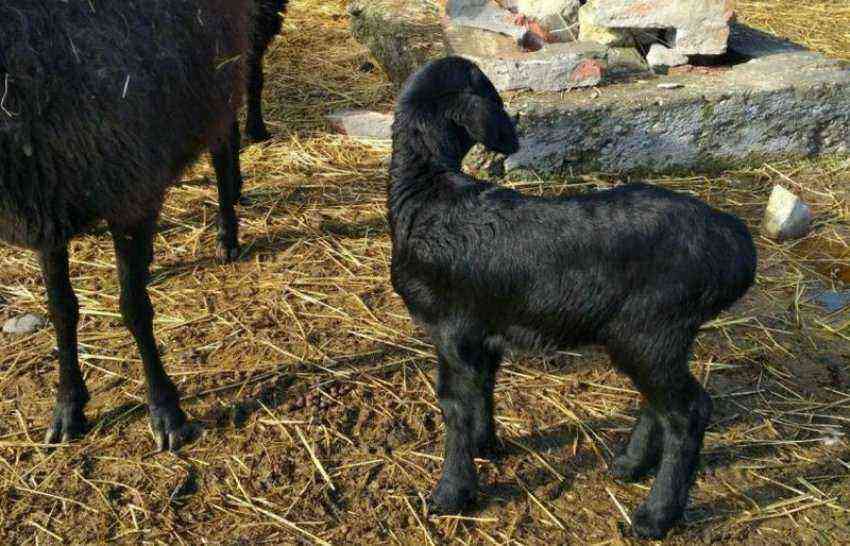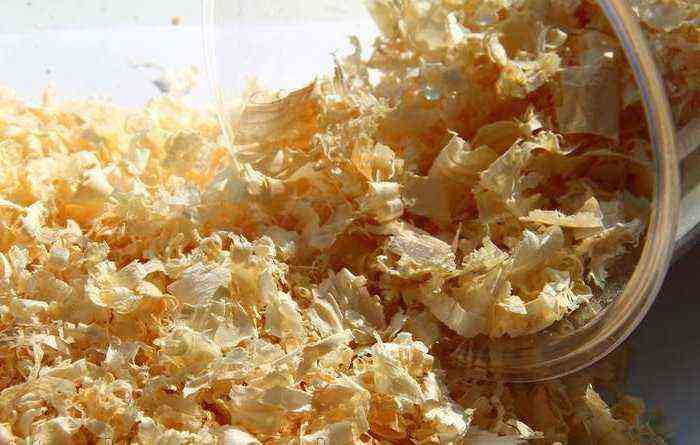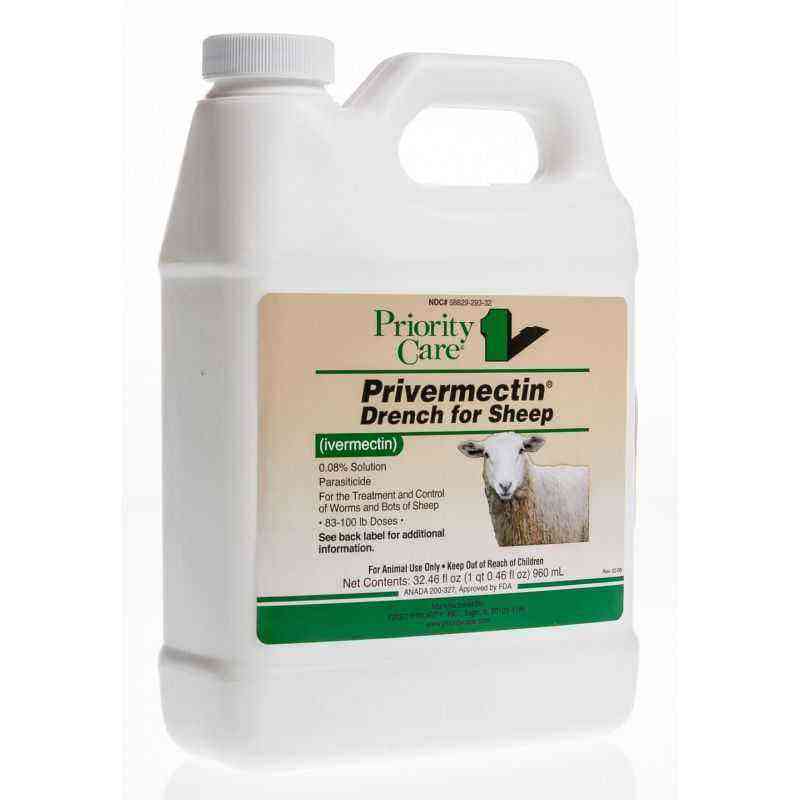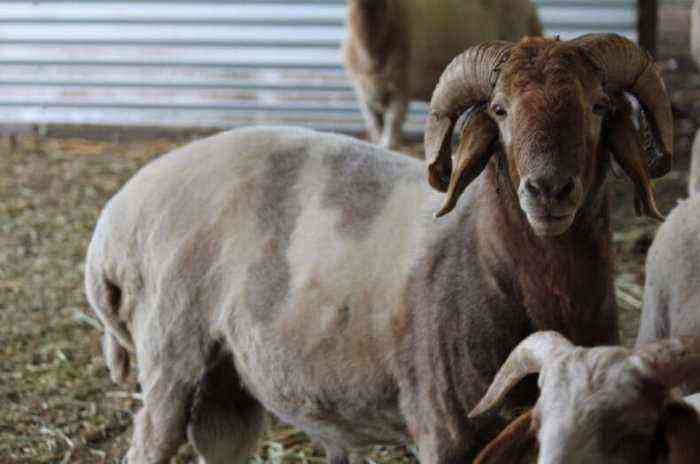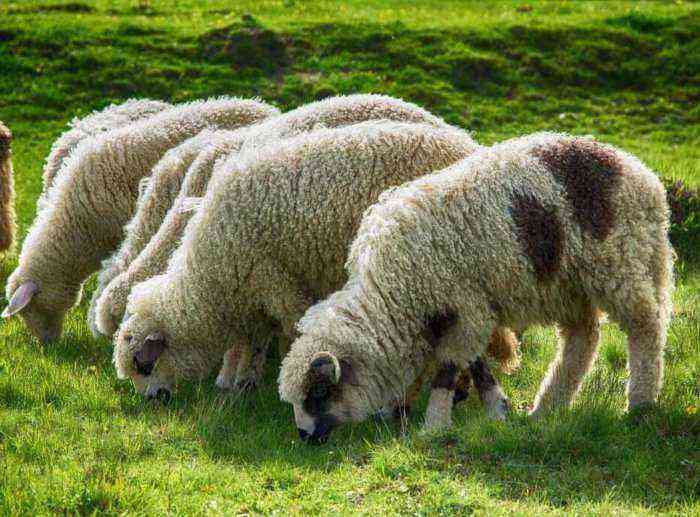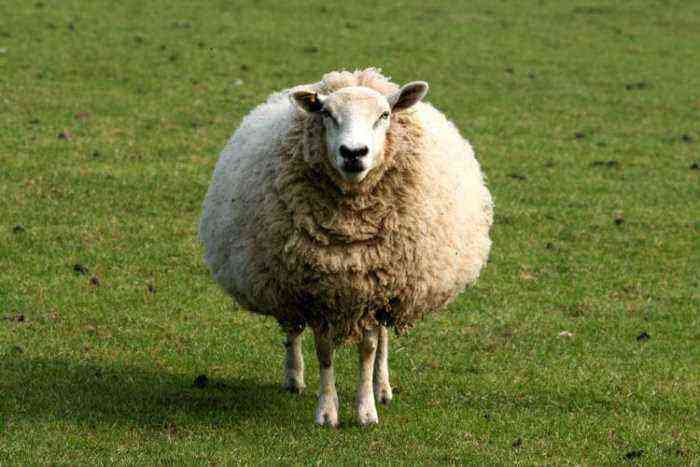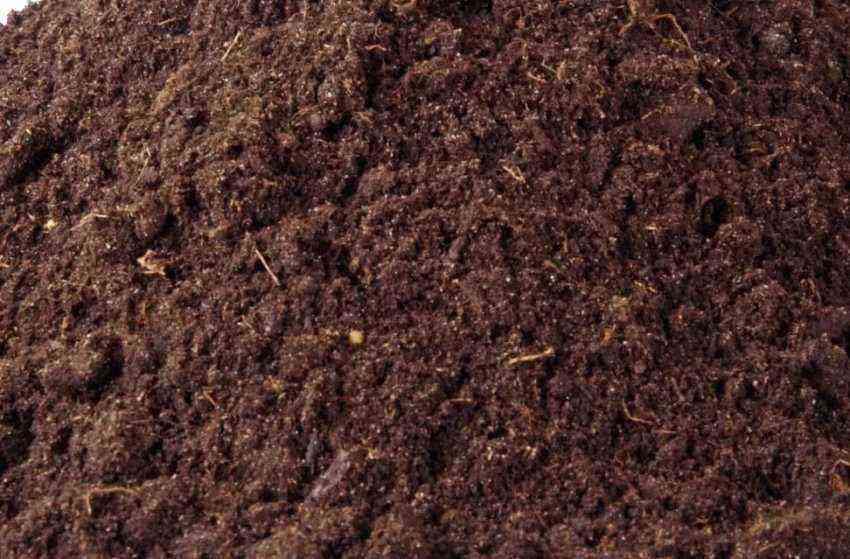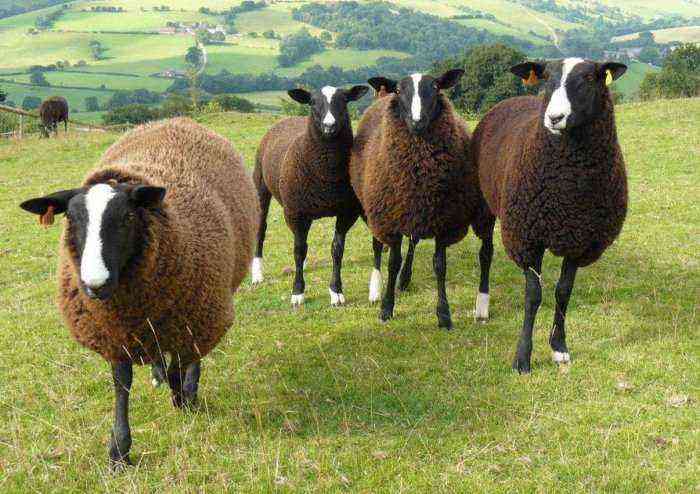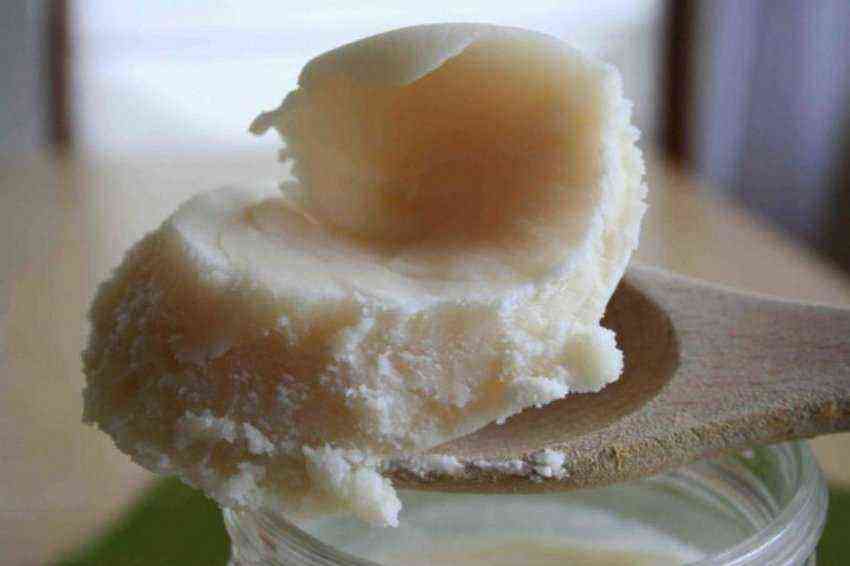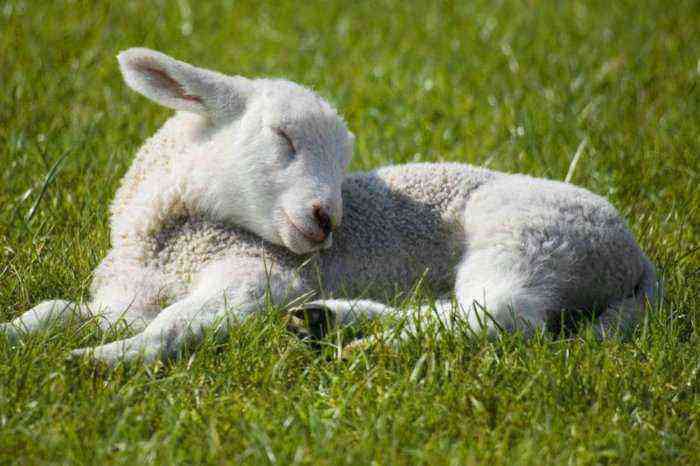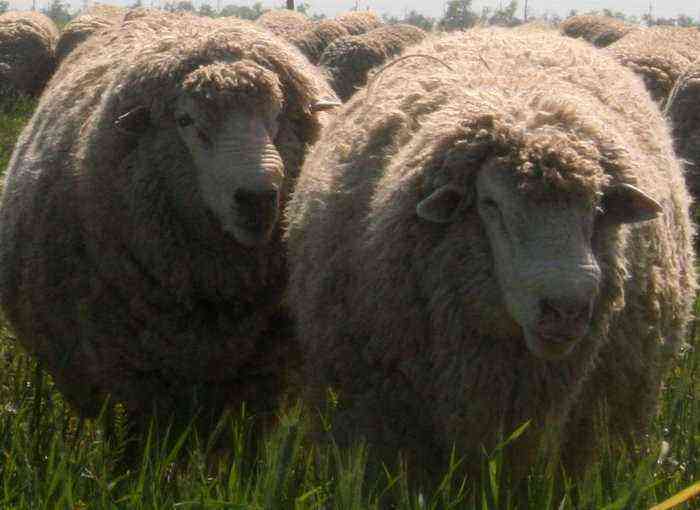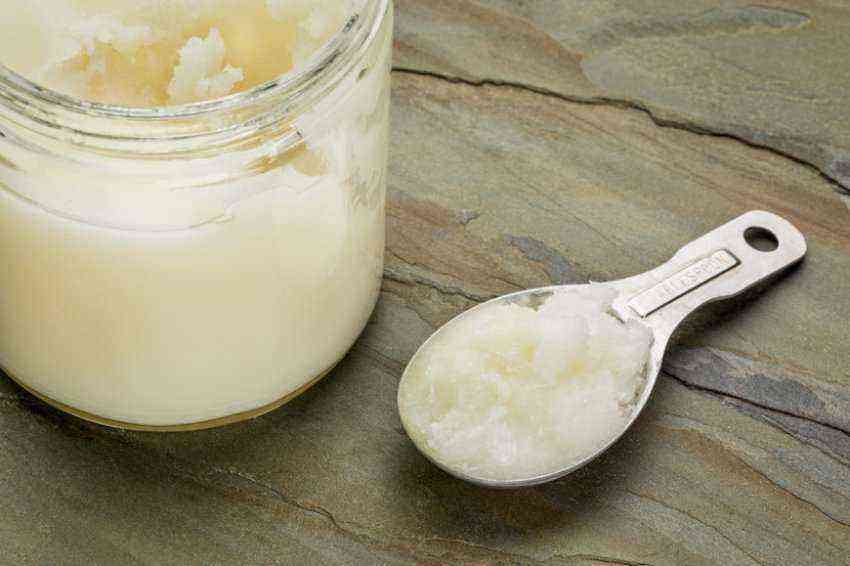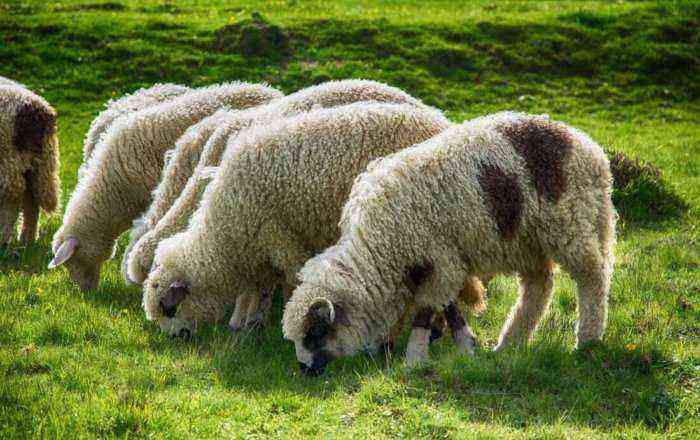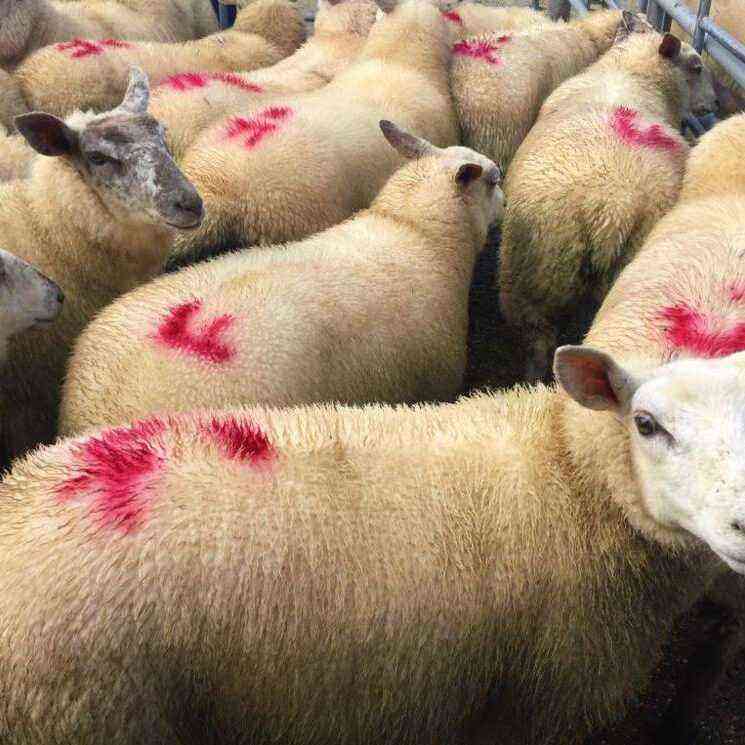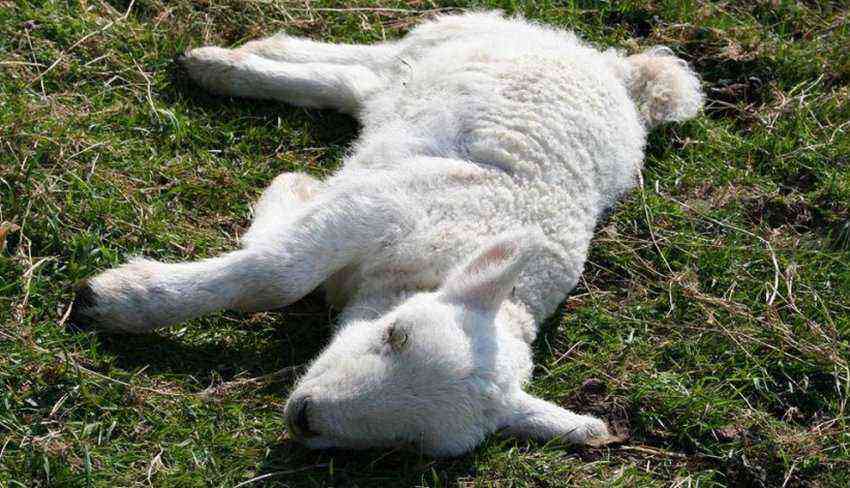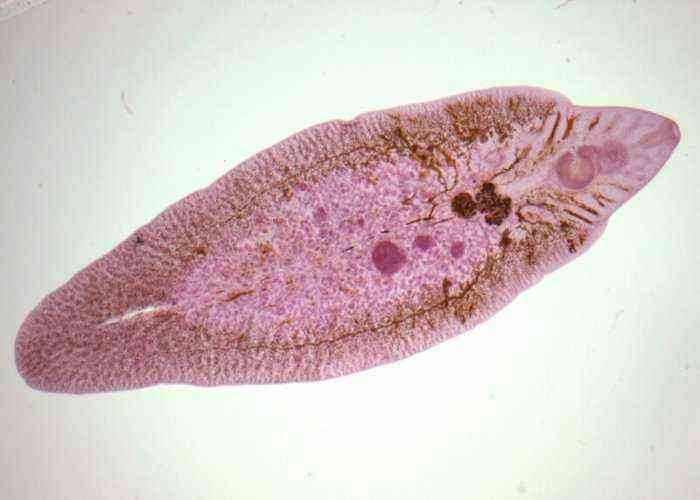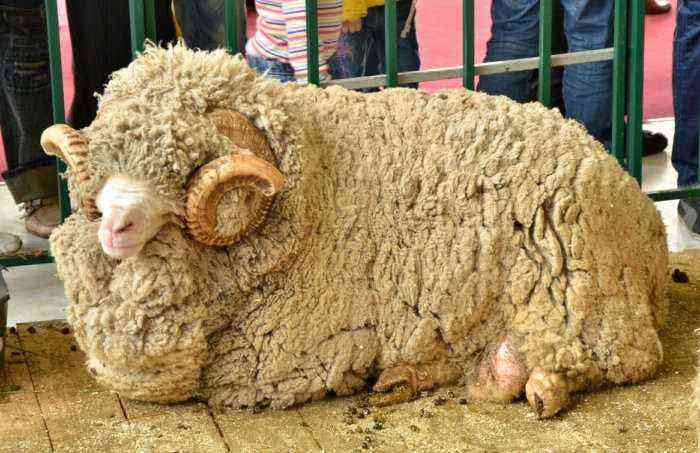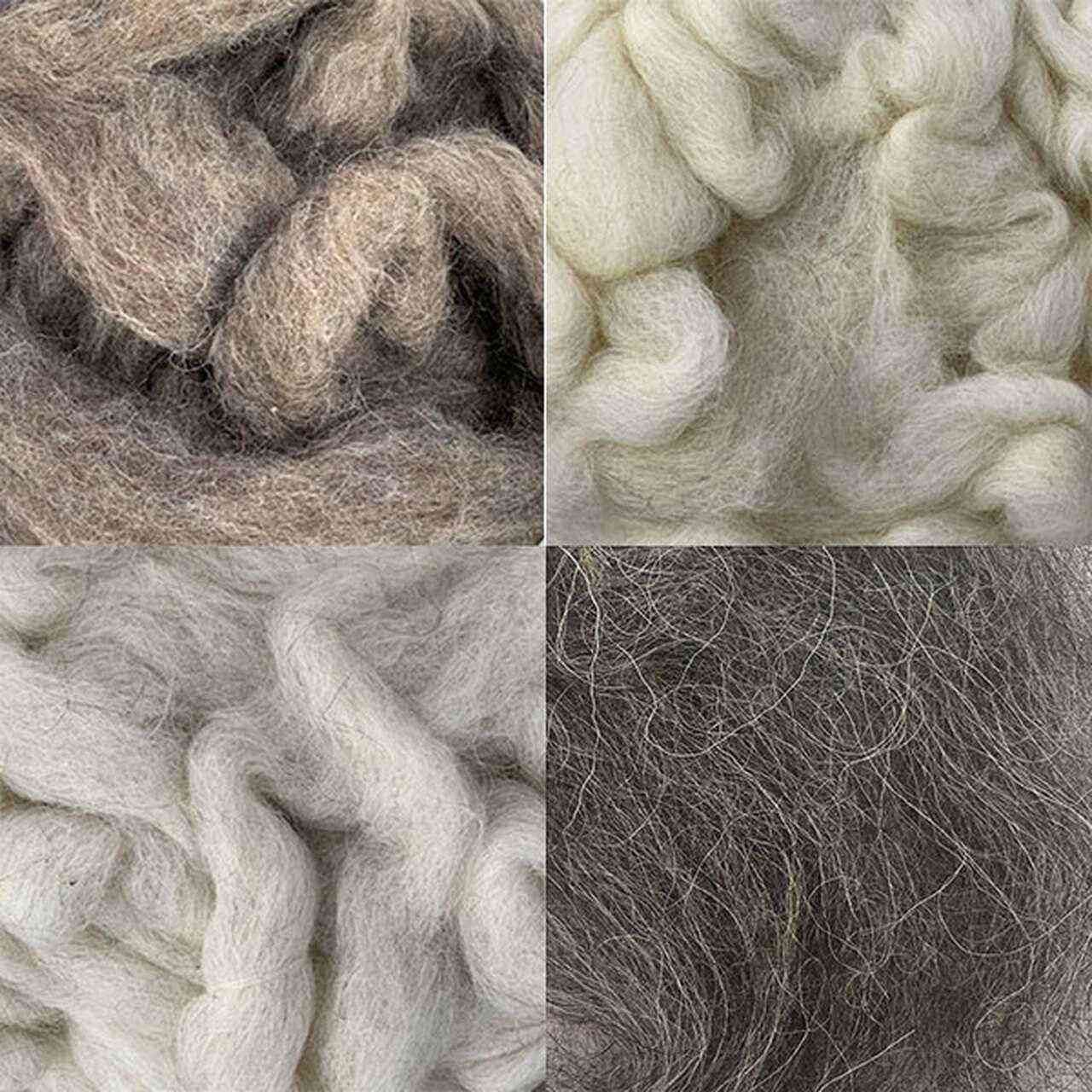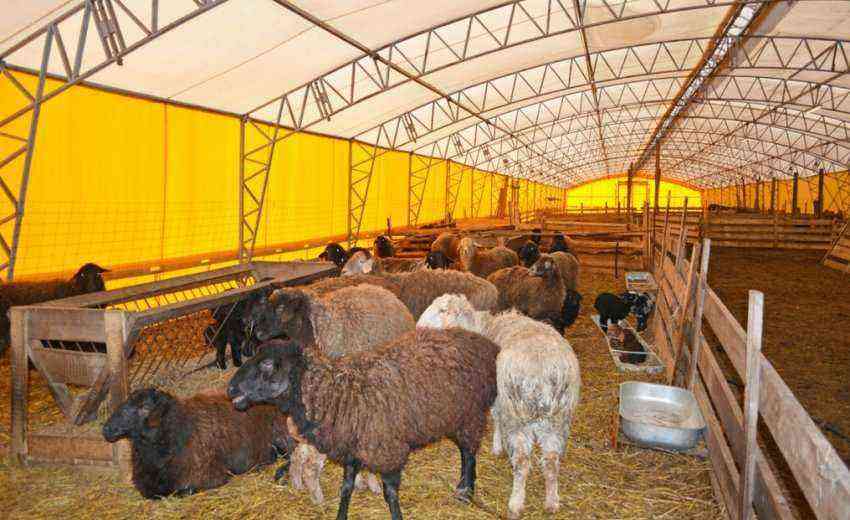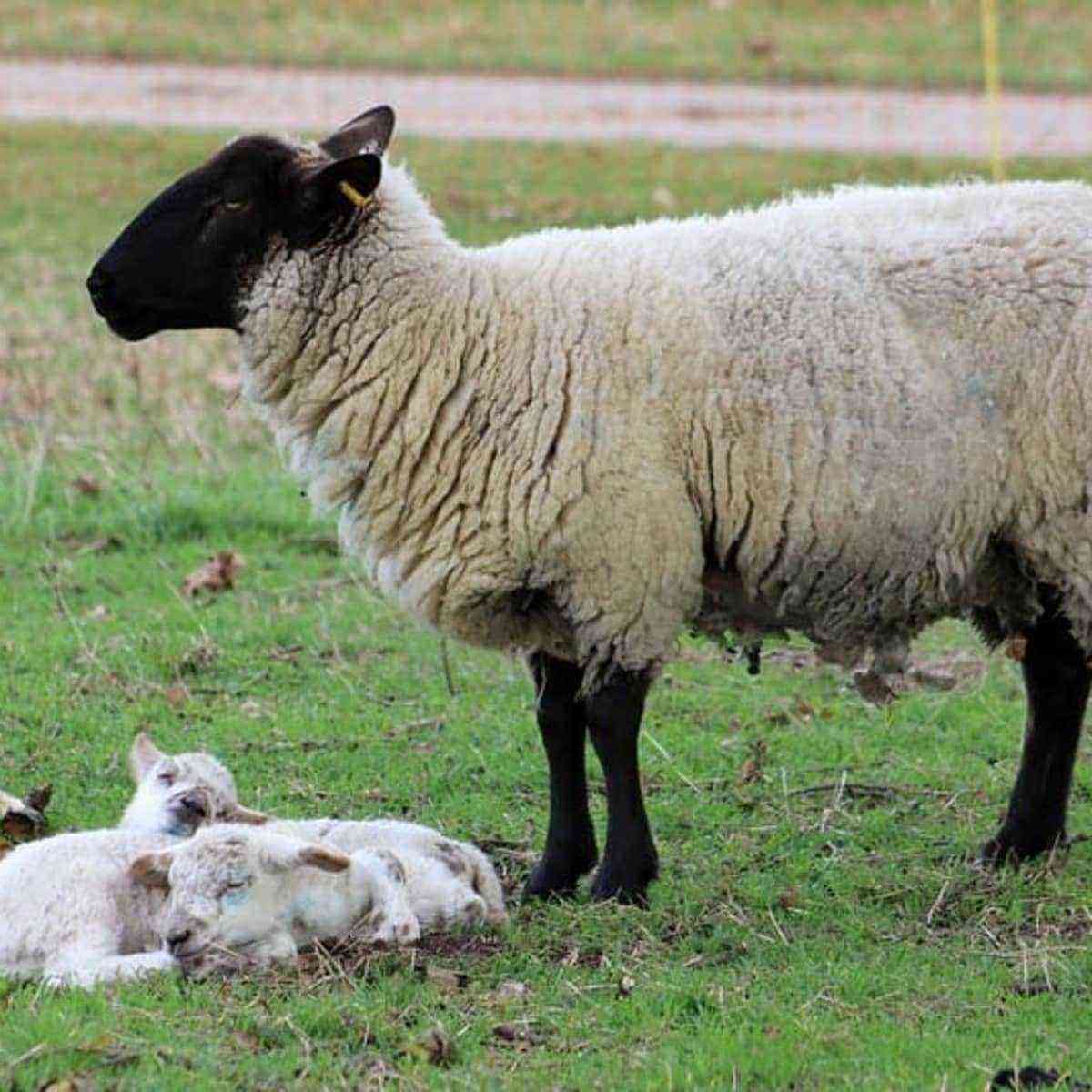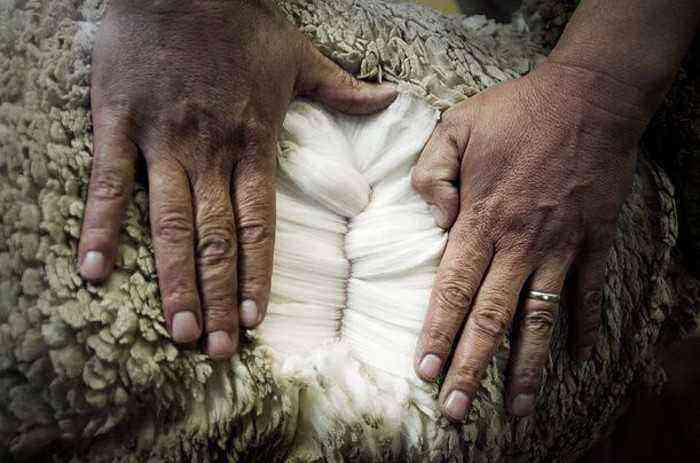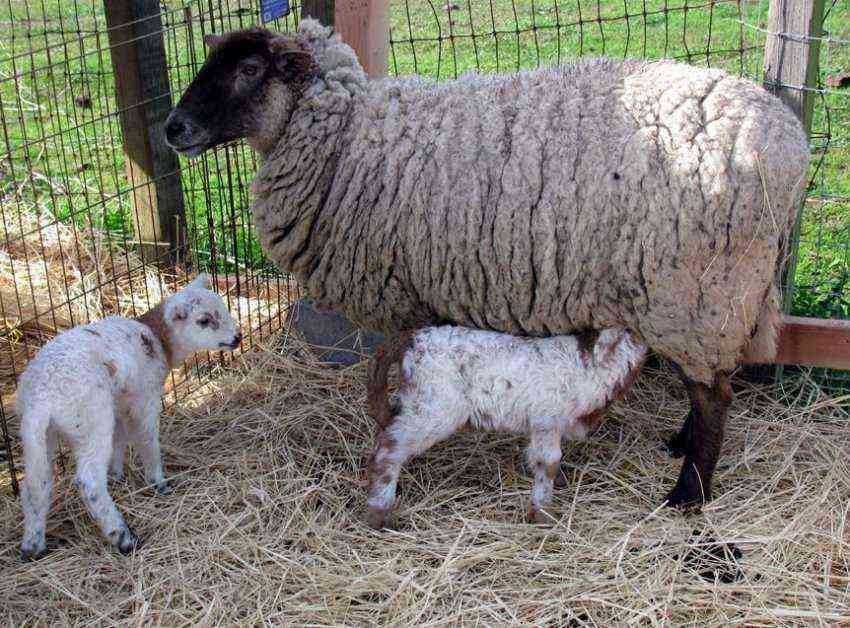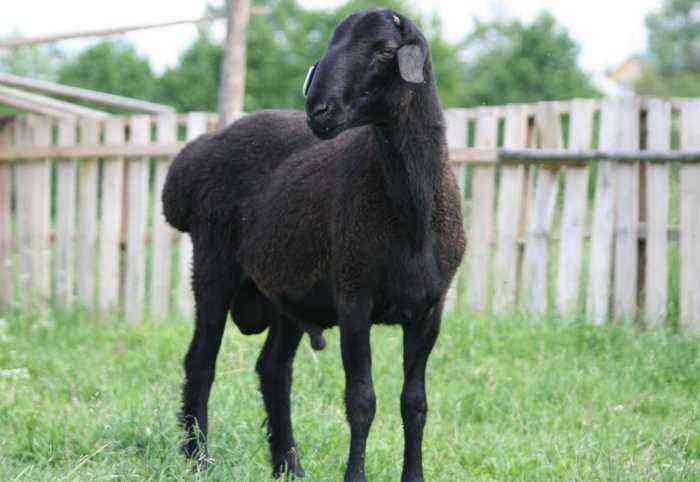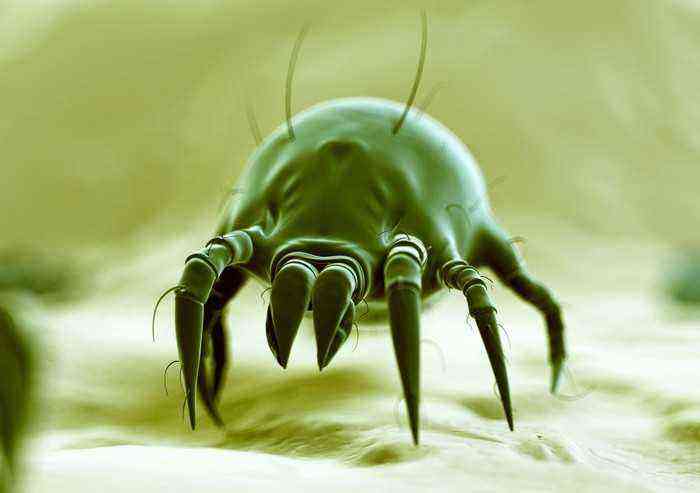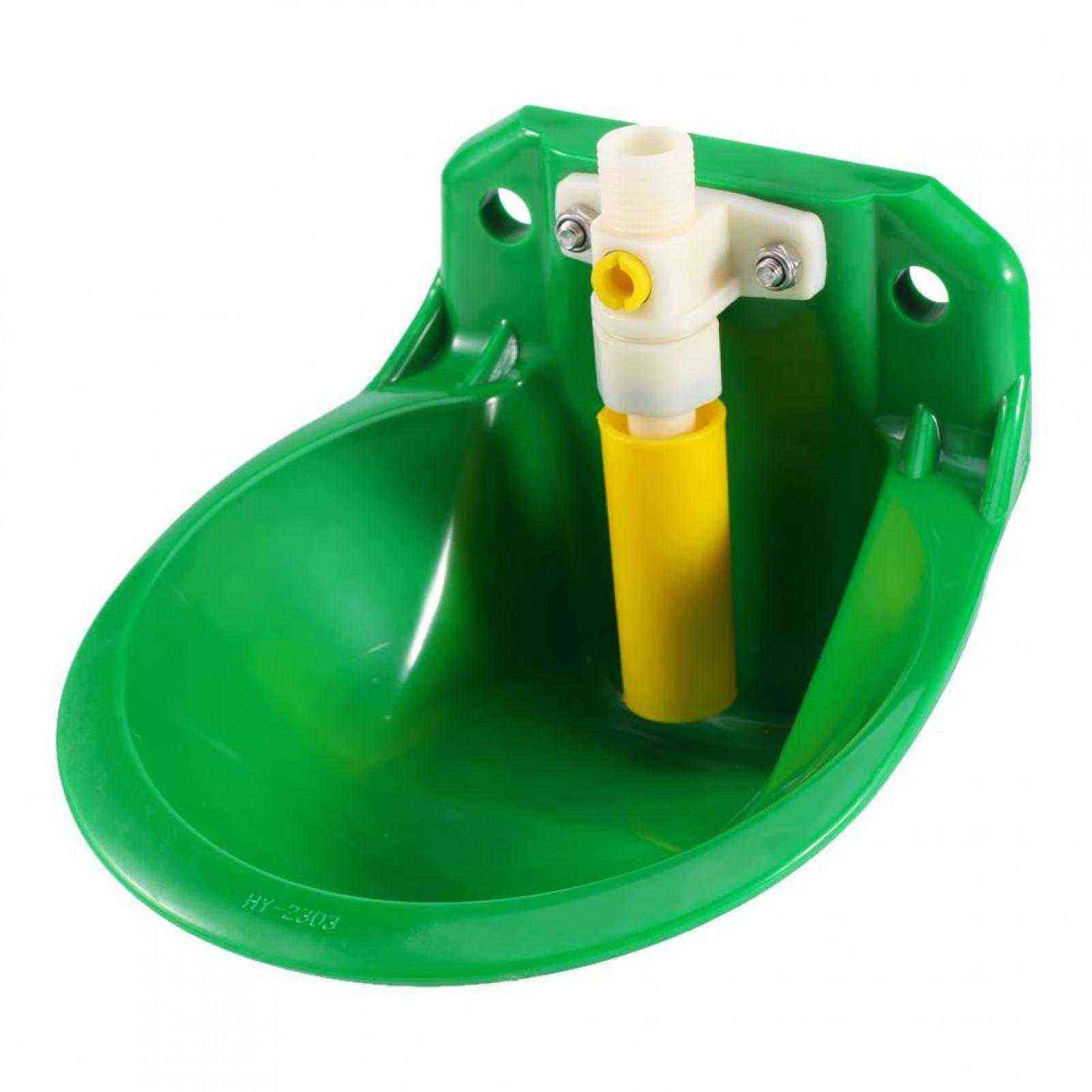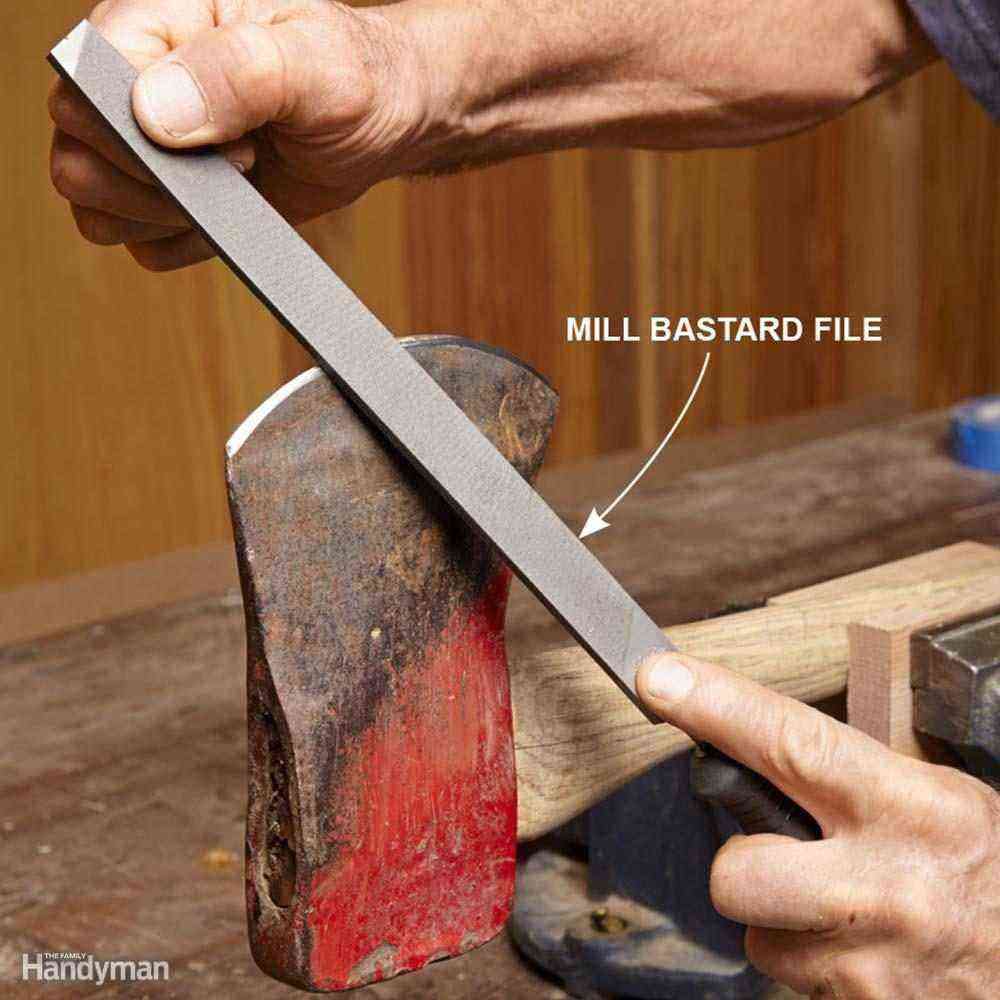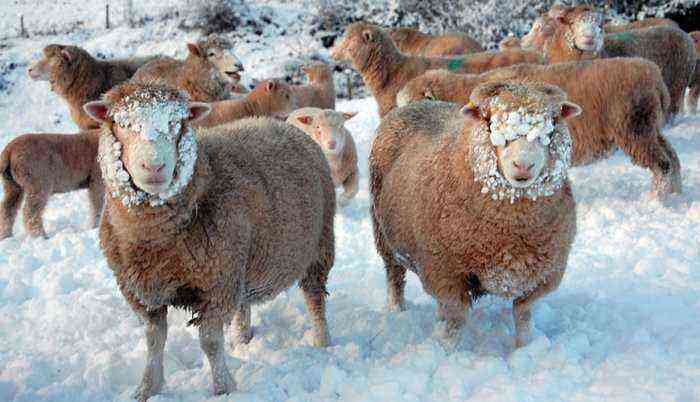Fine-wool sheep breeding is mainly represented by breeds of descendants of the Merino. Their wool is the thinnest – with a diameter of 16 to 24 microns. It is great for baby products: soft, warm. About the breeds that represent this direction, their characteristics and features – read further in the article.
General characteristics and description
There are over 1000 breeds of sheep in the world, making them the animals with more registered breeds than any other type of livestock. Many well-known breeds are highly valued for the benefits they bring in providing people with wool and meat. Some of them have a double characteristic, for example, meat-wool.
Did you know? A feature of a thin fleece is that 3 times more things can be sewn from it than from the same amount of fleece of coarse-wool sheep.
Woolly can be classified into four main categories:
- fine-wooled;
- long-haired;
- medium-haired;
- carpet wool.
This article focuses on the first of these groups. Fine-fleeced sheep, except for merino, are crosses. For example, the New Zealand corriedale breed was created by crossing a Merino with a long-haired Lincoln. Some of these rocks were obtained in the XNUMXth century.
The main properties of fine wool fibers:
- fleece thickness: 20–30 microns;
- sinuosity: 8 waves/cm;
- type of structure: staple;
- length: about 10cm;
- color: white or light;
- uniformity: +;
- gyropot: a lot.
Knowledge of breed characteristics and fiber characteristics is important when choosing the best breed for breeding. You can find out the exact characteristics of wool from the breed standards and compare them with the requirements of wool manufacturers who buy raw materials.
Productivity
For accelerated reproduction, 3 or more breeds are often used, which show a high level of desirable traits. Productive breeds are able to bear offspring all year round, regardless of the season. They have 2 lambings per year, each of which can bring 1-3 cubs. If the lambs quickly gain weight and become sexually mature, then this is also a plus for the breed.
Leading farms create breeding programs for their livestock and take into account all factors that affect productivity. Crossbreeding is another option for maximizing wool production. This results in crosses (hybrids) with a new set of characteristics. Perhaps they will be better than their parents.
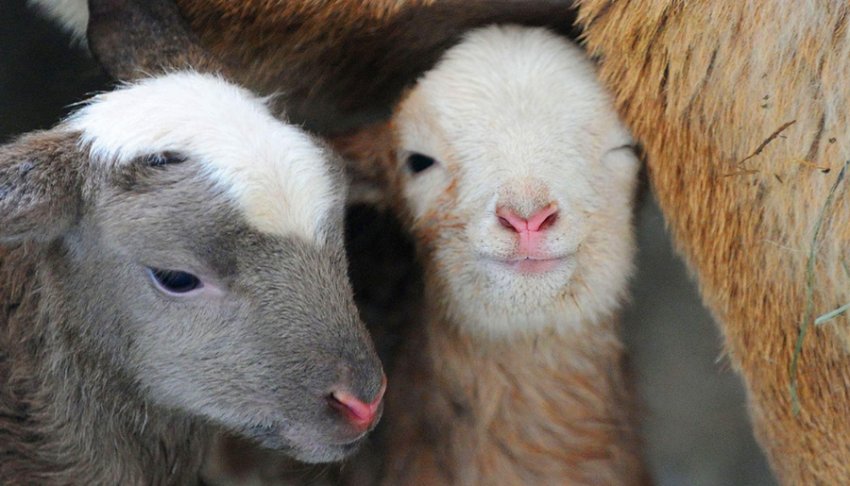
Wool
Fine-fleeced sheep are widespread both in the world and in our country. They can withstand heat, cold and drought perfectly and are quite productive even in harsh climatic conditions. Their coat must meet the established requirements. As for the founders of the direction – merinos – they originated in Italy more than 1200 years ago and at the moment have participated in the creation of almost the entire group of fine-fleeced sheep.
They are well adapted to living in arid climates, with little food. They have virtually no disease problems, produce excellent coats and are very prolific. Often used to improve the quality of the wool of existing breeds. Since Fleece traits are heritable, Merino hybrids will always get an improved wool compared to the breed that was improved.
Fertility
Most sheep reach sexual maturity between 6 and 12 months of age. For this reason, spring-born lambs tend to reach puberty earlier than autumn-born ewes due to their age and body weight. One of the ways to get a herd faster is to adjust the breeding time of the animals.
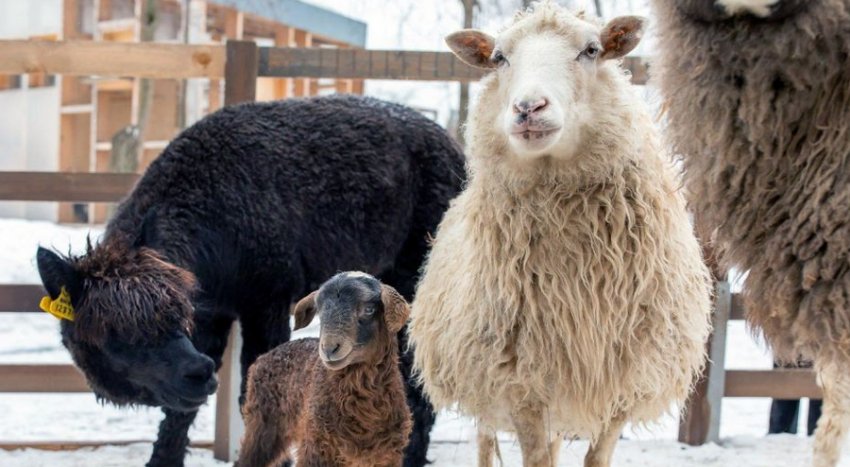
Reproduction is regulated by the oestrus cycle and ranges from 13 to 19 days and averages 17 days. Estrous cycles usually depend on the time of year. Most females become ready to mate when daylight hours begin to decrease. If the sheep is not fertilized, then the cycle will be repeated until pregnancy occurs.
Important! Sheep should not be bred until they are approximately 70% of their mature size (weight).
Reproductive characteristics:
- age of puberty: 5–12 months;
- duration of the estrus cycle: 17 days;
- gestational age: 146–147 days;
- offspring: 1–3 lambs.
The duration of pregnancy may vary. If the breed is able to bear several offspring per year, then the pregnancy lasts fewer days.
To obtain what the breed is bred
Sheep are bred for:
- warm sheep wool, which is used in the manufacture of clothing, bedding, furniture and even insulation;
- delicious meat;
- nutritious milk and products from it (sheep’s milk is used to make ricotta, feta and roquefort cheeses);
- to breed and produce new breeds or maintain existing ones;
- for use as pets.
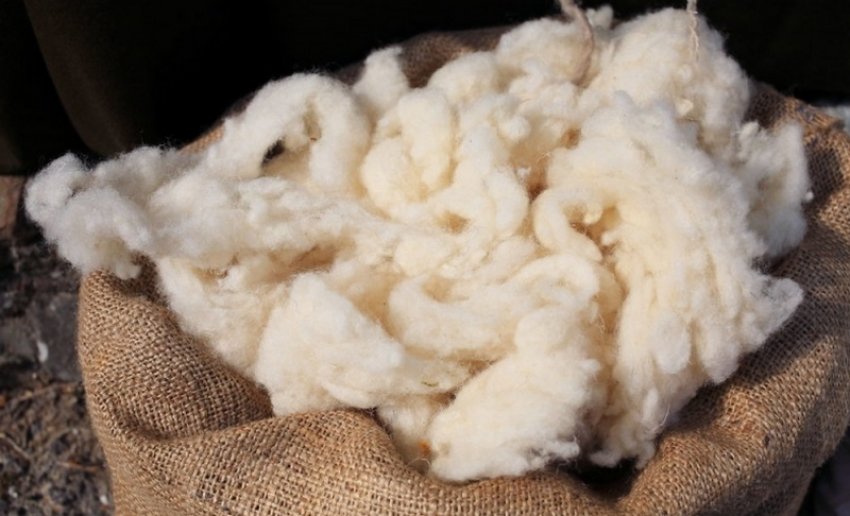
Signs and varieties
If fine-wool breeds are divided into 3 main types: pure wool (fine-fleece), wool-meat (semi-fine-fleece) and meat-wool, then a number of main features can be distinguished for each group.
wool sheep
So, fine-fleeced sheep have small dimensions and body weight. The mass of a ram reaches 90 kg, sheep – 45 kg. Their characteristic feature is the neck folds. These animals have almost no fat layer, but there is also little meat. This group includes Spanish merino, French rambouillet.
Did you know? Sheep wool is an excellent fiber used for insulation. It is flame retardant, non-carcinogenic, absorbs toxins, is recyclable, and is a natural sound blocker.
The yield of wool of these breeds is 18 kg per ram and 8 kg per year. The resulting wool will be quality level 80. Fine-fleeced sheep also have disadvantages: an insufficient amount of muscle mass, the need to feed the lambs. These breeds have more hoof problems than others.
Wool and meat
Due to the global decline in demand for wool, manufacturers have a need to modify breeds so that they can generate additional income. So there were sheep of a double direction: those that give more wool than meat – semi-fine-fleeced. These breeds are distinguished by the fact that they grow quickly and gain weight, adapt well to regions with high rainfall, and have a sufficient amount of wool.
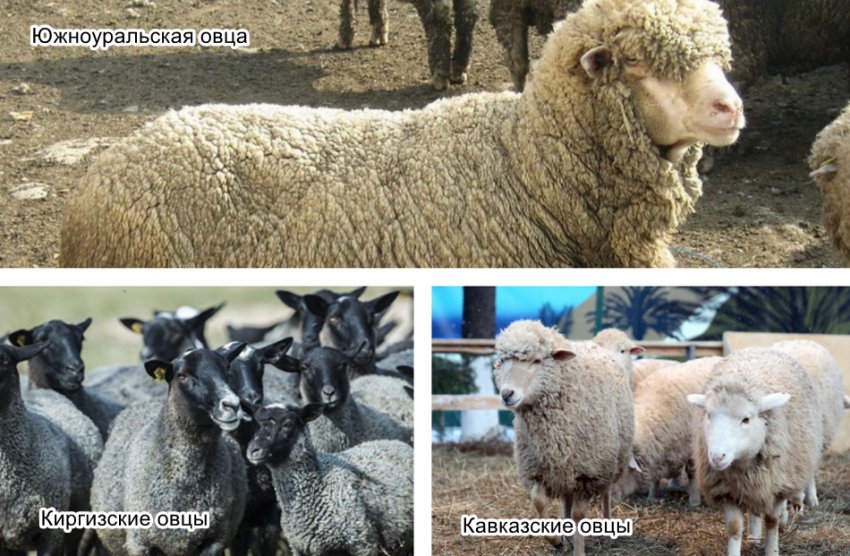 This group includes Caucasian, Kyrgyz, South Ural sheep.
This group includes Caucasian, Kyrgyz, South Ural sheep.
There is less meat in them than in purely meat breeds, but also enough. The weight of the male of this group is 110 kg, the female – 65 kg. The volume of wool received per year is 15 kg from a ram and 6 kg from a sheep.
Meat and wool
Meat-wool breeds equally possess both meat and a large volume of sheepskin. The weight of the male reaches 100 kg, the female – 60 kg. The muscular system of animals is well developed, and there is a layer of fat under the skin. The quality of the carcass is quite high. But wool is valued less than that of the two previous types of sheep. It is obtained from a male about 7 kg, from a female – 4 kg.
The resulting wool will be quality level 65. Only very pure wool is used in production, so the yield is considered as 45-50%. Animals have a strong skeleton, barrel-shaped body and do not have folds on the skin. This group includes mountain Dagestan, Vyatka, Prekos, Georgian fat-tailed.
Breed overview
There are many breeds of sheep in the world. But only some of them are of commercial importance. Those that contribute to the genetic diversity of other species are highly valued. When deciding which breed you need, consider your needs, the capabilities of the breed, as well as the sales market: where and in what quantity you can sell meat or wool.
At the same time, it is important to remember that there are no “best” breeds of sheep. All have traits that can make them desirable or undesirable, depending on the production system and marketing goals.
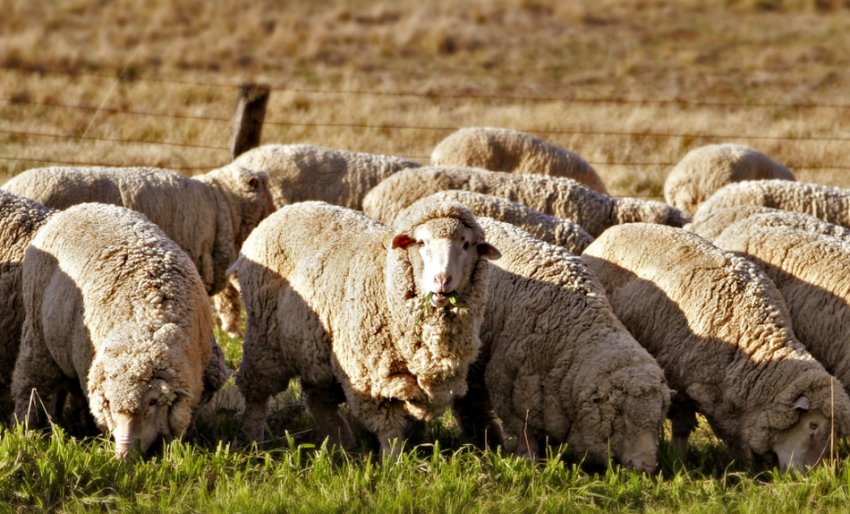
An overview of the possible types of sheep to breed:
- Purebred or crosses. The latter have a father and mother of different breeds. They are considered more durable. They may have a documented pedigree, which will indicate the percentage of parent breeds. Purebred animals are registered in breed books and will cost more than others.
- Wool or meat. Here the choice depends on the purpose of breeding. There is an opinion that if you use a herd not to produce purebred animals, then the presence of representatives of several breeds in it can give better productivity indicators than one breed.
Did you know? Sheep milk has 2 times more calcium than cow’s milk. It also has high levels of vitamins C, B, thiamine, riboflavin and B12. They support the immune system, participate in the normalization of the nervous system.
Soviet merino
The Soviet Merino is a breed of fine-fleeced sheep that actively developed in 1920–1952 in the southern regions of the USSR. Obtained by crossing Mazaevsky and Novokavkazsky sheep. Later, the flocks were improved with the Askanian, Caucasian, Stavropol, Grozny and Altai breeds. These are animals of a strong constitution with a strong skeleton, high overgrowth and powerful legs. The breed was represented by 2 types: fine-fleeced and semi-fine-fleeced sheep.
Characterized by:
- very dense fleece;
- wool of the 64th quality, with the same thickness, length (7,5–10 cm) and tortuosity;
- yield from shearing: 13–16 kg (sometimes up to 24 kg) from sheep and 5–7 kg (sometimes up to 12 kg) from sheep;
- the yield of purified wool is 36–42%;
- weight: wool and meat rams – 95-115 kg, sheep – 50-60 kg;
- fine-wool weight: 5–10 kg less than the previous group;
- the offspring is 120–140 lambs per 100 sheep;
- The breed is well adapted to winter grazing.

Currently grown in the Stavropol Territory, Rostov and Astrakhan regions, Western Siberia, Kalmykia and Kazakhstan.
Australian merino
The breed was originally known as the German Merino. The first animals were imported from Germany to South Africa in 1932 to improve the quality of the wool and meat of local sheep. The breed is known for its adaptability and efficient feed intake. Mature sheep grow up to 75 kg, and rams – up to 100 kg. Animals produce 3,5 to 4,5 kg of medium quality wool.
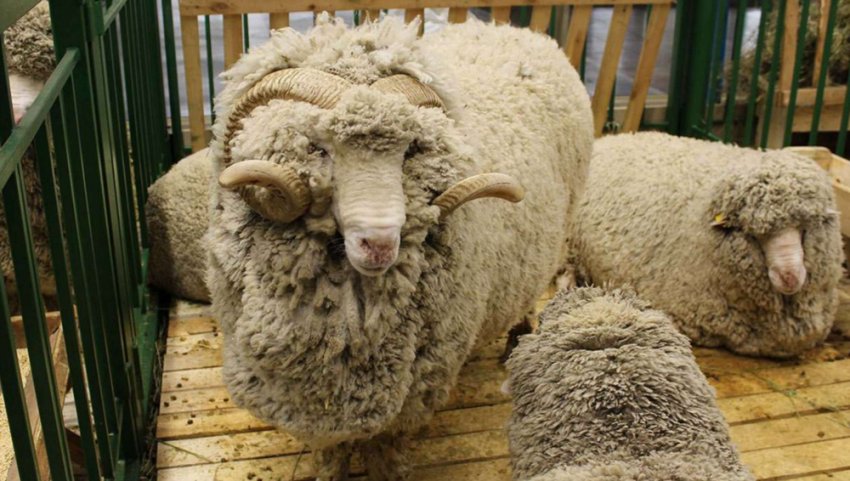
Salian sheep
The Salsky sheep was bred by Soviet breeders. The region of primary distribution is the Rostov region. The ancestors of the Salsk sheep are the same as those of the Soviet merino. But the combination of Novokavkazsk and Mazaev sheep gave insufficiently productive offspring with a low yield of offspring, an average yield of wool and meat, so they were later crossed with rambouillet. The resulting animals are adapted to the climate and food supply of the steppes of the Rostov region.
Did you know? In New Zealand in 2004, the merino sheep Shrek was lost. He lived in a cave for 6 years before he was found. During this time, a volume of wool was formed on it, sufficient for sewing 20 suits.
They are quite large, with a slight folding, a wineskin around the neck. Weight of rams – up to 100 kg, sheep – up to 56 kg. Meat yield at slaughter – 50%. Wool – quality level 64, females can be 70. Coat color is white to yellowish. It is characterized by monotony, one-dimensionality and clear sinuosity. Fleece weight – 15-17 kg in males and up to 8,5 kg in females.
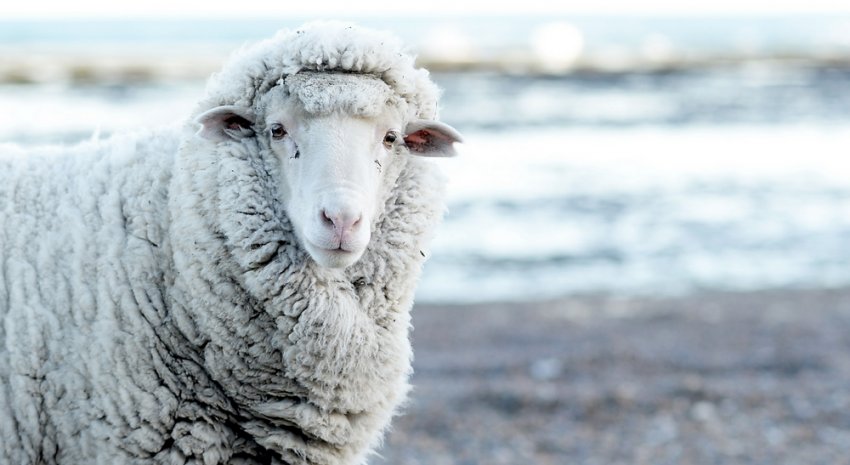
Stavropol fine-fleece
Stavropol fine-wool was obtained in the 50s of the last century in the USSR. When crossing, New Caucasian merinos and local sheep were used. The purpose of the selection was to improve the existing stock: increase wooliness and body weight. The breed is hardy and well adapted to poor feeding conditions.
It is characterized by a powerful physique, correct, well-set legs, the presence of horns in males, two folds on the neck. It is grown to obtain white high-quality uniform wool.
Productive characteristics:
- coat length: 8–11 cm (longer in rams);
- sheared: up to 7 kg from sheep and up to 13 kg from rams;
- wool yield: 50%;
- fleece: quality level 64–70;
- weight: sheep – up to 56 kg, rams – up to 110 kg;
- offspring: 135 lambs per 100 sheep.

Kazakh
The Kazakh breed was obtained in 1946. It is characterized by high meat productivity. These animals are very hardy, adapted to fit the nomadic life in the steppes of Kazakhstan. They tolerate winter frosts and summer drought well.
They can travel long distances and thrive in poor feeding conditions. Obtained by improving local breeds with Australian merino, rambouillet and South African merino. Considered one of the most productive breeds.
Key Features:
- weight: male – up to 120 kg, females – up to 70 kg;
- by 4 months, the weight of the carcass is about 22 kg;
- height at the withers – 75 cm;
- wool: 64–70 quality level (19,5–20,5 microns);
- clipped: up to 12 kg from a male and up to 5,5 kg from a female;
- coat color: beige;
- horns: absent;
- offspring: 115–125 lambs born for every 100 sheep.
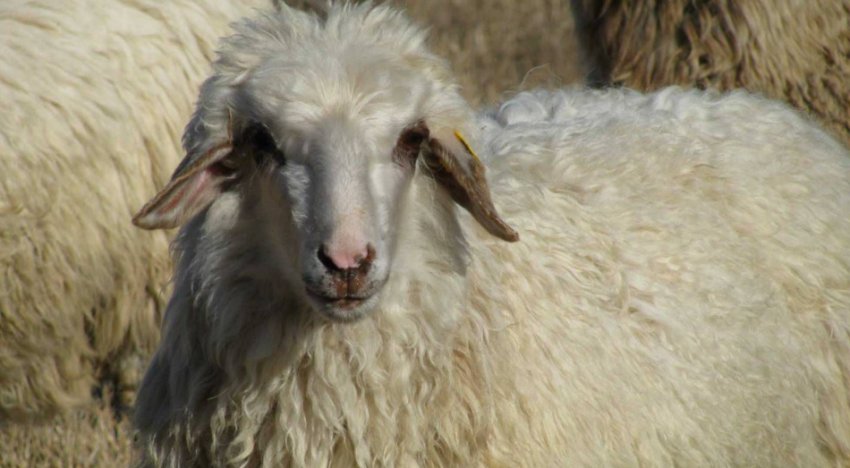
Milk, although of lesser importance, is also used commercially. The main products are ayran (curdled milk), cheeses and butter. The annual milk yield averages 152 liters. The fat content ranges from 3 to 9%, with an average of 5,8%.
Krasnoyarskaya
The Krasnoyarsk breed of sheep was bred in the 1930s–1960s in the USSR. When it was obtained, complex schemes for crossing Siberian merinos with rambouillet were used, and later other breeds were included in the selection. Animals are characterized by a large carcass, high quality meat and excellent hair: thin, long, shiny and dense.
Important! If you are feeding livestock with industrial compound feed, make sure that it does not contain copper. It is toxic to sheep and can cause poisoning.
Breed features:
- exit from the shearing: up to 15 kg from sheep and up to 6 kg from sheep;
- wool quality: 64th level;
- fiber yield: 55%;
- weight: rams – 90-100 kg, sheep – 50-55 kg.
- offspring: 120-130 lambs per 100 sheep.

Transbaikal breed
The Trans-Baikal breed belongs to the wool-meat type. Received in the USSR in the 60s of the last century. Its feature is excellent adaptability to the harsh conditions of Siberia with frosts down to -60 ° C and hot summers. The local livestock was characterized by coarse wool with a yield of no more than 2 kg. They began to improve even before the revolution by crossing with electoral and infantado rams.
But only work in the 40s became successful, in which animals with a clipping of up to 3,5 kg were obtained. Now this breed is characterized by a proportional physique, the presence of small wrinkles along the body, a straight back, a developed chest and a satisfactory volume of meat.
Main features:
- weight: bright – up to 60 kg, sheep – up to 115 kg;
- wool: white, evenly colored;
- sheared: 6 kg from sheep and 16 kg from rams;
- fiber yield: up to 55%;
- quality: 64th level;
- fertility: 120%.

Ascanian breed
The Askanian fine-wooled sheep was bred in Ukraine by crossing rambouillet and merino in the early 90s of the last century. Has white fur. Rams are horned, and females can be both horned and polled. Males have 2 folds on the neck. At maturity, males weigh 115 kg, females – up to 69 kg. The offspring is bright equal to 127%.
Several records are associated with this breed. So, the world record for the weight of fine-wooled breeds belongs to the Askani ram. It is equal to 183 kg. And they also own the absolute clipping record – 31,7 kg.
Features:
- weight: up to 65 kg in a female and up to 120 kg in a male;
- clipped: up to 8 kg in a female and up to 19 kg in a male;
- quality: level 64 for sheep and level 58 for rams.
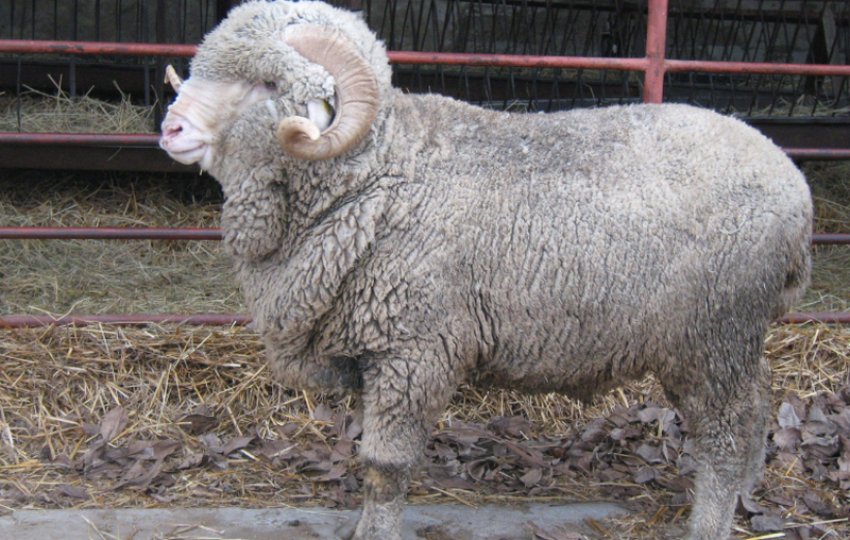
South Ural sheep
Yuzhnouralskaya is one of the oldest and most famous breeds grown in the Orenburg region. Initially, coarse-haired sheep with a large fur coat lived here. They were improved with prekos and tsigai rams to improve the quality of the wool and the volume of the finished fleece.
They are well adapted to cold climates. Animals can dig in the snow to get to the grass. They do not have much meat, but it is characterized by exceptional taste.
Important! Animals should not be grazed after rain, when earthworms are on the surface. They are — potential carriers of helminths that can be swallowed along with the grass.
Features:
- weight: ram – up to 120 kg, sheep – up to 50 kg;
- cut: up to 12 kg and up to 5 kg, respectively;
- rune output: 50%;
- fertility: 120%.
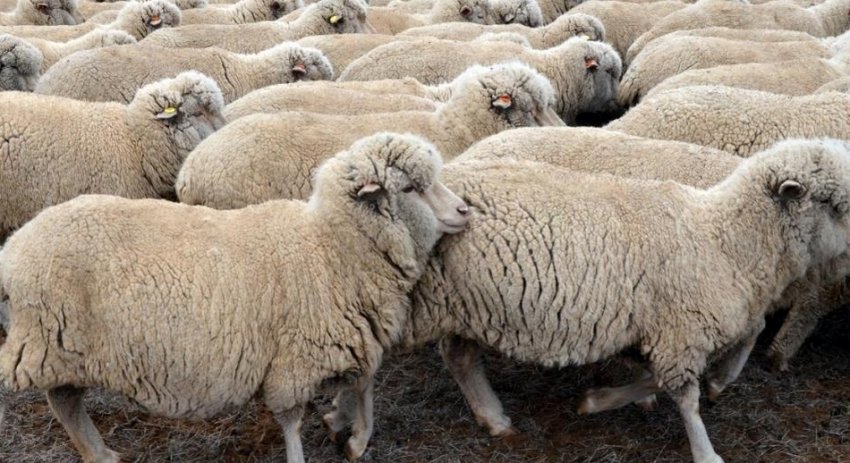
Rambouillet
The Rambouillet is a sheep breed also known as the French Merino. Its breeding was started in 1786 when King Louis XVI purchased over 300 Spanish Merinos. The herd was bred and improved, but not sold until the XNUMXth century. From the Spanish Merinos, the resulting livestock was distinguished by its greater weight and longer wool. Described as a dual purpose breed due to the high quality of both meat and wool.
Characteristic:
- weight: ram – up to 90 kg, sheep – up to 65 kg;
- cut: up to 10 kg and up to 6 kg, respectively;
- fiber length: up to 7,5 cm;
- wool yield: 40%;
- offspring: 150%.
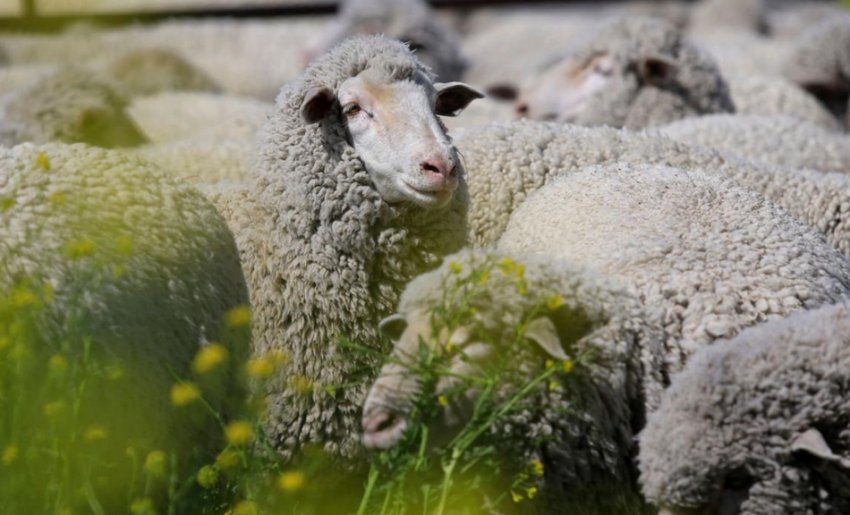
Prekos
Prekos is a breed of meat and wool direction. Bred in France in the XNUMXth century by crossing the Rambouillet and the English Longhair. Sheep thrive in regions with warm climates and abundant pastures. The breed is well suited to hilly terrain. The small hooves of animals make it easy to move along the slopes.
Important! Be sure to stock up on alfalfa hay in the summer. It is a herb rich in vegetable proteins and calcium. In winter, it is fed to sick or weakened sheep.
Key Features:
- wool: thick, dense;
- body: massive, strong bones;
- head: large, hornless;
- height: up to 80 cm;
- weight: ram – up to 130 kg, sheep – up to 70 kg;
- sheared: from a ram – up to 10 kg, from a sheep – up to 5,5 kg;
- wool yield: 49%;
- fiber length: 8 cm;
- quality: 60-64th level.
Video: Prekos fine-wool sheep
Maintenance and care
The life expectancy of sheep is about 10 years. They can live longer if conditions are comfortable. To make animals less sick, pay attention to which region they are adapted for. Sheep are in the growing season on pastures. There should be several of them, for alternation, since animals eat grass to the very ground. The optimal grazing area is 1,2 ha per individual.
At this time, a fenced area is enough for the herd, where the sheep are driven at night to protect them from predators. A canopy should also be organized there to protect against rain, feeders with hay and drinkers should be placed. The need for housing in winter depends on the climate zone. A barn with stalls is suitable for keeping. This is very convenient for isolating sheep with newborn lambs. But for most breeds, an ordinary simple barn with natural ventilation is also suitable. Keeping animals outdoors has its advantages.
Thus, they get physical activity, a healthier microclimate and, consequently, cleaner and healthier wool, which increases the yield of pure wool for sale. Nutrition is the second important content parameter. In summer, they have enough food for grazing. And in winter, hay is supplemented with root crops and corn silage. For 1 animal you will need up to 4 kg of feed per day. Be sure to place the salt in one of the feeders. It is necessary for the organization of digestion. The norm of salt is 15 g / day. Animals will also need clean water.

From time to time the farmer should inspect the herd. Animals can damage the hooves, and parasites settle in thick wool. In order to identify and eliminate the problem in time, you need to control the animals at least once a week. You will need to periodically trim the hooves, trim the hair, give anthelmintics and vaccinate the livestock. Vaccination is carried out against the main infectious diseases: enterotoxemia and tetanus, according to the schedule proposed by the veterinarian.
Features of haircuts
Haircut wool breeds carried out in the spring. If you leave animals in fur coats, they will get sick due to overheating. Then they are sheared 2-3 more times, as the hair grows back. Be sure to separate dirty wool from clean hair when cutting, as only the clean part will be sold. You need to cut carefully so as not to injure animals. Use electric scissors or other available tool.
Important! Before you start cutting, check the sharpening of the tool and be sure to disinfect it with alcohol. Before you start working on the next animal, sharpen the scissors and process again.
The optimum air temperature on the day of the procedure should be + 17 … + 23 ° С. Hold the animal during the procedure. Start cutting from the belly. Here is the dirtiest wool. Then process the sternum and sides. The last will be the neck and chin.
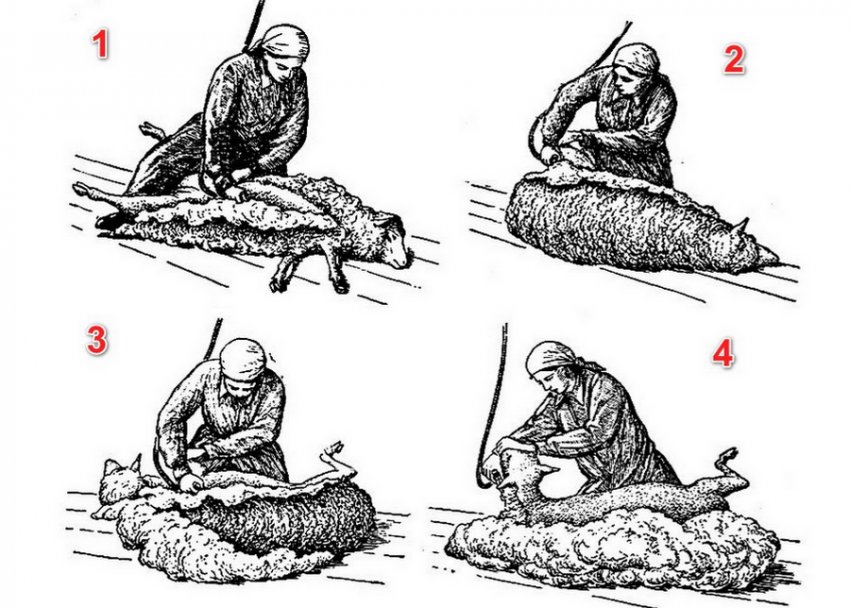 The sequence of work on shearing a sheep.
The sequence of work on shearing a sheep.
Breeding the breed
Sheep reproduce reproductively. One ram is enough for crossing. Sexual maturity of most breeds occurs at 7-8 months. The female’s hunting cycle will last 17 days. If during this time she did not become pregnant, then after a while the cycle will repeat. A female ready for mating signals this with the smell of pheromones. It is difficult to find out about the onset of pregnancy by the appearance of the animal. This can only be established by a veterinarian by examining the female with ultrasound. The duration of pregnancy is 5 months.
Just before giving birth, the female will be restless, her udder will swell, her hip bones will droop. The sheep itself can be resolved from the burden. But if the lamb is too big, then problems can arise. To help the female, invite a veterinarian. Newborn lambs are very active. If the lamb is healthy, it will try to get back on its feet almost immediately. The mother licks the baby, clearing his mouth and nose of mucus. For the first few hours, she will feed him colostrum.
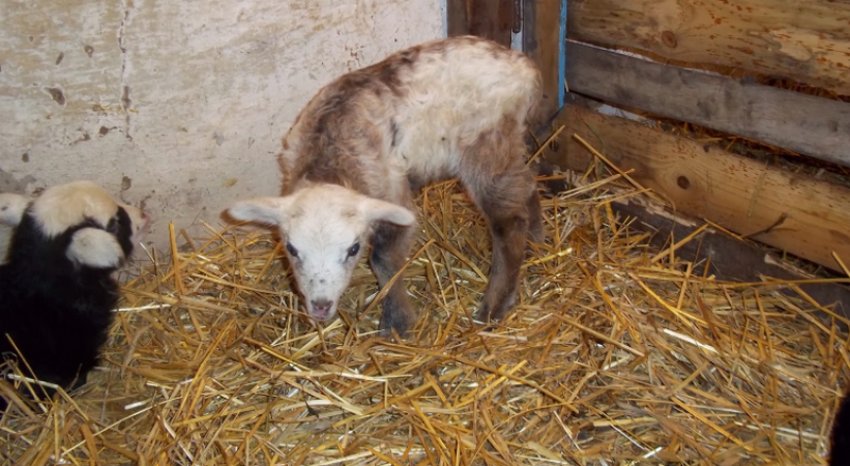
This is necessary to strengthen the immune system. And then continue feeding with milk for 1-1,5 months. After this, the baby is gradually transferred to the diet of adult animals. Sheep breeding can be profitable if you correctly consider your needs and the capabilities of the breed. Be sure to keep in mind that weakened animals should be culled from breeding. This will help to get a herd with high productivity.
